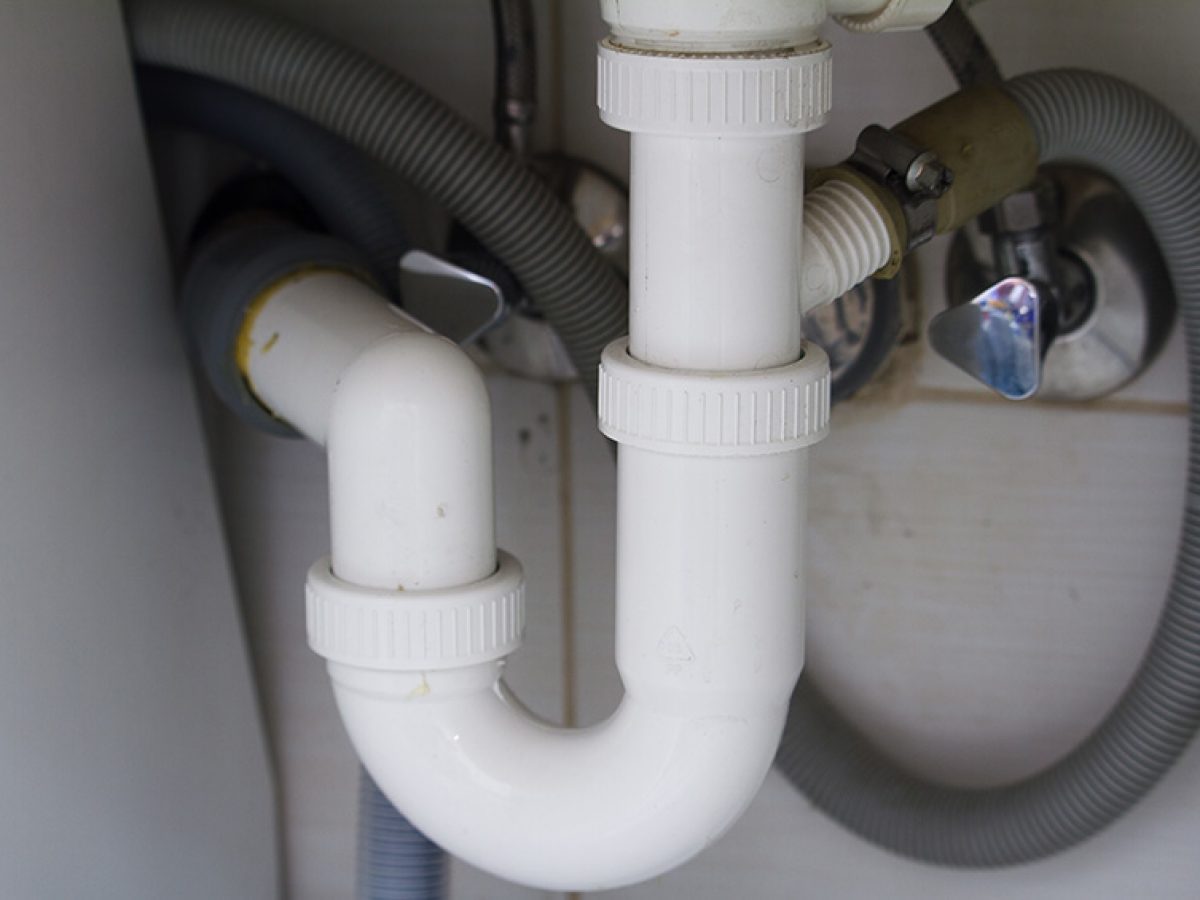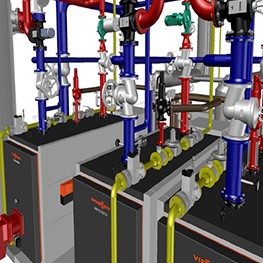Understanding The Structure of Your Home's Plumbing System
Request AppointmentWhat're your beliefs on Exploring Your Homes Plumbing Anatomy?

Comprehending just how your home's pipes system functions is crucial for every homeowner. From providing clean water for drinking, cooking, and bathing to safely removing wastewater, a well-kept plumbing system is vital for your family members's wellness and convenience. In this thorough overview, we'll explore the intricate network that makes up your home's plumbing and offer tips on maintenance, upgrades, and dealing with common problems.
Intro
Your home's pipes system is greater than simply a network of pipelines; it's a complicated system that guarantees you have accessibility to clean water and efficient wastewater removal. Knowing its components and how they work together can aid you protect against pricey repair work and guarantee whatever runs efficiently.
Standard Parts of a Plumbing System
Pipes and Tubing
At the heart of your pipes system are the pipelines and tubes that bring water throughout your home. These can be made from various materials such as copper, PVC, or PEX, each with its advantages in terms of durability and cost-effectiveness.
Fixtures: Sinks, Toilets, Showers, and so on.
Components like sinks, bathrooms, showers, and tubs are where water is used in your house. Recognizing exactly how these fixtures connect to the plumbing system aids in detecting issues and planning upgrades.
Valves and Shut-off Factors
Shutoffs manage the flow of water in your pipes system. Shut-off shutoffs are important throughout emergency situations or when you need to make repairs, allowing you to isolate parts of the system without interfering with water flow to the whole residence.
Supply Of Water System
Main Water Line
The major water line links your home to the metropolitan water system or a private well. It's where water enters your home and is dispersed to different fixtures.
Water Meter and Stress Regulatory Authority
The water meter steps your water use, while a stress regulator makes certain that water streams at a safe stress throughout your home's plumbing system, protecting against damages to pipes and components.
Cold Water vs. Hot Water Lines
Recognizing the distinction in between cold water lines, which supply water straight from the primary, and warm water lines, which carry warmed water from the water heater, aids in troubleshooting and preparing for upgrades.
Drain System
Drain Pipes Pipeline and Traps
Drain pipelines bring wastewater far from sinks, showers, and bathrooms to the sewer or sewage-disposal tank. Catches avoid sewage system gases from entering your home and also catch debris that can cause blockages.
Ventilation Pipelines
Air flow pipes permit air into the water drainage system, avoiding suction that can slow drain and cause traps to vacant. Proper air flow is essential for preserving the honesty of your plumbing system.
Relevance of Proper Drain
Making certain appropriate water drainage prevents back-ups and water damages. Frequently cleansing drains and preserving catches can prevent expensive fixings and extend the life of your plumbing system.
Water Furnace
Types of Water Heaters
Hot water heater can be tankless or traditional tank-style. Tankless heating systems heat water on demand, while storage tanks store heated water for instant usage.
How Water Heaters Connect to the Plumbing System
Comprehending just how hot water heater connect to both the cold water supply and hot water circulation lines aids in detecting issues like inadequate warm water or leakages.
Upkeep Tips for Water Heaters
Regularly purging your water heater to remove debris, checking the temperature settings, and checking for leakages can expand its lifespan and improve energy performance.
Common Plumbing Issues
Leaks and Their Causes
Leaks can happen because of maturing pipelines, loosened installations, or high water stress. Addressing leaks promptly prevents water damage and mold growth.
Blockages and Obstructions
Blockages in drains and bathrooms are typically triggered by purging non-flushable products or a buildup of grease and hair. Using drain screens and being mindful of what goes down your drains can prevent obstructions.
Indicators of Pipes Troubles to Expect
Low tide stress, sluggish drains, foul odors, or unusually high water bills are signs of potential pipes troubles that need to be resolved immediately.
Pipes Maintenance Tips
Routine Evaluations and Checks
Schedule yearly pipes assessments to capture problems early. Look for signs of leakages, deterioration, or mineral accumulation in faucets and showerheads.
DIY Upkeep Tasks
Basic jobs like cleaning faucet aerators, looking for bathroom leaks using color tablet computers, or protecting exposed pipelines in cool climates can prevent significant pipes problems.
When to Call a Professional Plumber
Know when a pipes problem requires professional expertise. Trying complex fixings without correct understanding can lead to even more damage and higher repair prices.
Upgrading Your Pipes System
Factors for Upgrading
Updating to water-efficient fixtures or changing old pipes can boost water high quality, reduce water costs, and enhance the worth of your home.
Modern Plumbing Technologies and Their Benefits
Discover innovations like clever leak detectors, water-saving toilets, and energy-efficient hot water heater that can save cash and decrease ecological impact.
Price Considerations and ROI
Compute the in advance costs versus long-lasting savings when thinking about plumbing upgrades. Lots of upgrades pay for themselves with reduced energy bills and less repairs.
Environmental Influence and Conservation
Water-Saving Components and Devices
Setting up low-flow taps, showerheads, and toilets can dramatically reduce water use without sacrificing performance.
Tips for Lowering Water Usage
Basic habits like taking care of leakages immediately, taking shorter showers, and running complete tons of washing and dishes can save water and reduced your utility expenses.
Eco-Friendly Pipes Options
Consider lasting plumbing products like bamboo for flooring, which is durable and environmentally friendly, or recycled glass for counter tops.
Emergency situation Preparedness
Steps to Take Throughout a Pipes Emergency
Know where your shut-off valves lie and how to turn off the water system in case of a ruptured pipe or major leakage.
Relevance of Having Emergency Contacts Helpful
Maintain contact information for regional plumbing technicians or emergency situation solutions readily available for quick action throughout a pipes crisis.
DIY Emergency Fixes (When Suitable).
Short-lived solutions like using duct tape to patch a leaking pipeline or putting a pail under a trickling faucet can minimize damage up until an expert plumbing technician gets here.
Verdict.
Understanding the anatomy of your home's plumbing system empowers you to preserve it successfully, conserving money and time on repairs. By following regular maintenance routines and staying notified concerning modern plumbing innovations, you can ensure your pipes system runs successfully for several years to come.
HOW YOUR PLUMBING SYSTEM WORKS
Which Pipes Do What?
Blue lines = fresh water supply entering the building
Red lines = hot water supply entering the building
Grey lines = pipes carrying waste away from the building and venting pipes carrying gases away from the building (through the roof)
YOUR MAIN PLUMBING SYSTEMS
There are two main plumbing systems that support your home s basic plumbing needs one that brings clean water into your home, and one that sends dirty water away from your home. Connected to the toilet, bath, shower, and other faucets in your home, these two systems keep your water flowing in the right directions.
ACCESSING FRESH WATER
Fresh and clean water is brought into your home through the main water supply line . Filtered through one pipe, this water is pressured to flow into the various fixtures in your home at any given time.
This water can be sourced from a well located on your property, a pond or river (mostly cottages), or, as in most cases, from the city s municipal water treatment centre. However, it is important to note that water that is untreated, such as the water siphoned from ponds or rivers, may not be safe to drink. Personal water supplies always need to be treated for hardness and contaminants before consumed.
MUNICIPAL WATER SUPPLIES
Improve taste and odour
Remove sediment
Eliminate hardness
Reduce chlorine
COLD WATER SUPPLY VS. HOT WATER SUPPLY
Cold water flows into your home or building through the service line, which then distributes hot or cold water to your fixtures. This line is most commonly run through a central column that runs floor to floor. Hot water runs in short and straight pipes as the longer the pipeline, the more heat that will be lost in the transfer. Having shorter pipes also allows residents to access hot water more quickly.
WASTE WATER SYSTEM
Your wastewater system is divided into two parts pipes that send wastewater away from your home and venting pipes that send sewer gas away from your home. Sewage water travels through pipes that flush the water and waste towards local sewers that are operated and managed by your city or town. Most sewer systems rely on gravity to move the wastewater to where it needs to go.
The further away from your toilet or sink, the larger wastewater pipes become. This allows for waste to be disposed of from various parts of your home or business at once without pipe blockages. The angle and flow of these pipes are also essential for keeping your waste pipes clear of build up.
https://harrisplumbing.ca/how-your-home-plumbing-system-works/

HOW YOUR PLUMBING SYSTEM WORKS
Which Pipes Do What?
YOUR MAIN PLUMBING SYSTEMS
There are two main plumbing systems that support your home s basic plumbing needs one that brings clean water into your home, and one that sends dirty water away from your home. Connected to the toilet, bath, shower, and other faucets in your home, these two systems keep your water flowing in the right directions.
ACCESSING FRESH WATER
Fresh and clean water is brought into your home through the main water supply line . Filtered through one pipe, this water is pressured to flow into the various fixtures in your home at any given time.
This water can be sourced from a well located on your property, a pond or river (mostly cottages), or, as in most cases, from the city s municipal water treatment centre. However, it is important to note that water that is untreated, such as the water siphoned from ponds or rivers, may not be safe to drink. Personal water supplies always need to be treated for hardness and contaminants before consumed.
MUNICIPAL WATER SUPPLIES
COLD WATER SUPPLY VS. HOT WATER SUPPLY
Cold water flows into your home or building through the service line, which then distributes hot or cold water to your fixtures. This line is most commonly run through a central column that runs floor to floor. Hot water runs in short and straight pipes as the longer the pipeline, the more heat that will be lost in the transfer. Having shorter pipes also allows residents to access hot water more quickly.
WASTE WATER SYSTEM
Your wastewater system is divided into two parts pipes that send wastewater away from your home and venting pipes that send sewer gas away from your home. Sewage water travels through pipes that flush the water and waste towards local sewers that are operated and managed by your city or town. Most sewer systems rely on gravity to move the wastewater to where it needs to go.
The further away from your toilet or sink, the larger wastewater pipes become. This allows for waste to be disposed of from various parts of your home or business at once without pipe blockages. The angle and flow of these pipes are also essential for keeping your waste pipes clear of build up.
https://harrisplumbing.ca/how-your-home-plumbing-system-works/
We had been guided to that article about Understanding Your Home's Plumbing Anatomy through a pal on our other website. Liked our review? Please quickly share it. Let others find it. Thanks so much for your time spent reading it.
Book Today